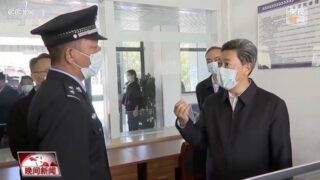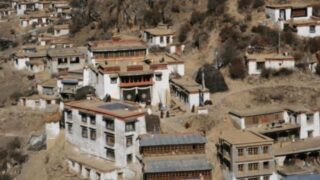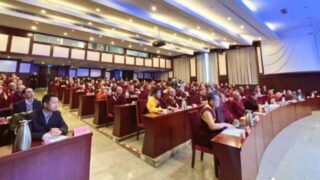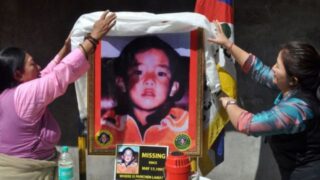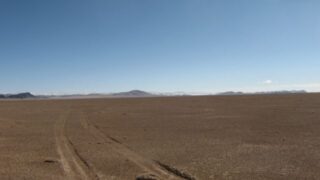What will happen in Tibet and in the Tibetan diaspora when the Dalai Lama will die?
by Ugyen Gyalpo


Careful of not sounding pessimistic, I am often worried about the fate of Tibet, which is fast diminishing under the unforgiving brutal wind of the ever changing geopolitical climate. A couple of decades ago, Tibet was often quoted by political analysts and media as a sore point when dealing with the emergence of China in the global paradigm shift. China was still at the cusp of the stratospheric rise that we are seeing today and not a global player yet.
Fast forward two decades later, after China’s stratospheric rise and becoming the factory of the world, even though the pandemic left a gaping dent and halted their astronomical growth for a while, the engagement with China on economic bilateral relations had tied down to how much China would open up its market for the respective countries, depending on how much they were willing to bend over knees and play by China’s strict rules.
This was perfectly summed up by Edward Lucas, who coined the term “Tibet test.” “If you think you live in a free country, ask if your politicians feel free to meet the Dalai Lama. If the answer is no, then you are part of the Chinese empire—you just haven’t realised it yet.”
Now even after hundreds of self immolations inside of Tibet, ecological catastrophe, destruction of monasteries, and deteriorating human rights, Tibet is failing to make it to the global headlines and is often intentionally ignored and thrown in the back burner of hypocrisy and anonymity.
As of late, whenever we hear of the Chinese Communist Party and the condemnations thereof, Xinjiang has replaced Tibet as their Achilles heels that the west led by the U.S. is keen on poking at. Not denying, though, that Xinjiang with all the atrocities it has suffered under the repressive Chinese regime deserves all the attention. But it is gravely coming at the cost of forgetting, Tibet, which happens to be the “lab test” of all the atrocities that are currently being committed in Xinjiang.
Tibet from 1959 has not seen a reprieve from the perennial repression under the Chinese Communist regime, and still continues to this day, largely ignored by the world powers, who are shamelessly kowtowing to the whims and fancies of the CCP due to its massive economic clout juxtaposing to the values they are proponents of.
Our self destructive political stance in reshaping the course of our history in the late seventies has also much to do with the waning of Tibet in the world’s political spectrum ever since we gave up our rightful claim to our independence. To make it worse, decades of endless appeasement policies of the Tibetan government in exile in the hope of a positive response, amounted to nothing but repeated shunned door for much desired diplomacy. It has also trained the eyes of the world to view with a false notion of how Tibetans were gradually accepting themselves as one of the many ethnic minorities of China and Tibet as an internal domestic issue of the PRC.
CCP’s massive half a billion dollars a year disinformation campaign as opposed to our self defeating complacency and a policy moulded around Buddhistic teachings has but helped legitimize the illegitimate Chinese narrative of Tibet being an inseparable part of China since time immemorial. In other words, China has been successful in burying Tibet alive and sometimes we played a somewhat suicidal role too.
China playing by their favorite Sun Tzu’s tactic of hyena’s “long wait game” has bought ample time for the icon and symbol of Tibet to gradually age, buying time by fooling us for decades into the hope of a compromise. It has now totally paralyzed our political movement and halted at a dead end.
Seeing His Holiness amble his frail body recently in the land where Buddha was born, amidst throngs of humanity who had gathered for his teachings, despite his repeated assurance of living up to the age of 113 years, still pained me and welled up my eyes into imagining how even such a godly figure who is forever immortalized into our psyche can succumb to the inevitable.
This thought in all urgency transported me into a grave sense of predicament about the future of Tibet and our dwindling cause, once His Holiness succumbs to the forces of impermanence.
Even during the twilight of His Holiness’s life, as I write this, our societies far from standing together for a common cause are heavily divided and fractured on regional and sectarian grounds.
The only centripetal force that is keeping all the Tibetans together for now despite the chaotic indifferences is the presence of His Holiness the Dalai Lama. Imagine, what would be our world like on his perpetual absence!
Will the Tibetan people stay resolute or face a major meltdown after His Holiness’ departure? Will we all look like the lost herd of sheep without their herdsmen and push each other off the cliff?


Although we have a model government in place, will the power and the respect that it yields under the auspices of His Holiness still remain? Will it receive the same kind of moral legitimacy from the west as it does now? How will our host India look with a renewed lens in the post Dalai Lama era?
On a hypothetical note, even after there is a swift reincarnation of the 15th, will the world embrace the new Dalai Lama as the same iconic spiritual and polarizing figure who left us before?
What will happen to the Tibetan cause if the Dalai Lama decides not to reincarnate, given China’s politicization and the hijack of the reincarnation process?
After His Holiness, who will emerge as the “leading flag bearer” of the Tibetan cause beside the future tokenized Sikyong? I say “tokenized” because despite democratically elected at the helm, in the hearts and minds of the Tibetan people, the Dalai Lama still reigns supreme. In a nutshell, His Holiness is already bigger than Tibet. He has become synonymous to Tibet.
From our spiritual Buddhist monastic world, regardless of how we loathe to have monks engage into our political scheme of things, regardless of how much we aspire to see a total separation of the Church and the State in our governance and policy making, who will emerge as a reckoning force to unite the Tibetan people under one banner? Will it be the Karmapa?
Given Karmapa’s historical relevance and significance, Karmapa’s place in the Tibetan Buddhist hierarchy, will he play a pivotal role like His Holiness the Dalai Lama in becoming a global icon and a centripetal force to keep the broken beads of rosary under one united thread? Or will he forever remain mired in litigation and state suspicions?
How will China respond after the unthinkable happens? Will they force Tibetans with a new dummy Dalai Lama right away, as everyone expects them to do since they have already installed a dummy Panchen Lama in place? A laughingstock, though, he has become to us Tibetans.


Will China clamp down even harder on the Tibetans inside of Tibet given how Xi Jinping as of late had mirrored the brutality of Mao? By reenacting Mao’s brutal legacies, will Xi Jinping go about destroying anything and everything that reproaches and undermines the way of the Communists and their dogmatic ideologies?
If the Tibetan cause still survives the test of time and stay relevant long after His Holiness is gone, will we always strive for the Middle Way Path or will we have a new found semblance and a courage to ask for a new referendum.
Will we see a newer generation of Tibetan leaders, who will be sophisticated and well educated and willing to shoulder the mantle of the Tibetan cause with the same zeal and patriotism their parents might have shown? We have already witnessed few leaders in the making.
I am sure just like India existed for over two hundred years under British colonialism, Tibet will also survive. But to the many questions that I have raised above, I doubt if even our State Oracle would have the answers.
It has only been sixty plus years since we lost our country. I don’t know if Tibet as a nation will exist for another 130 years, just like India did for two hundred plus years under occupation. But I can tell you this much, that this decade will pretty much predict the course of our geopolitical history.
I hope and pray to see His Holiness live up to the age of 113 that he has claimed he would live up to. There are many Japanese in Okinawa who are well above hundred years and perfectly well. But to plan for the future on realistic terms, to prepare for the inevitable and to prove that the fruits of labor His Holiness has sowed and invested for over six decades is not wasted into our tornado of internal status quo and upheaval should be our prime focus and responsibility.
Until then, keep your seatbelts tightened since we will be on a rollercoaster ride soon to find the answer to all of the questions I have raised.


